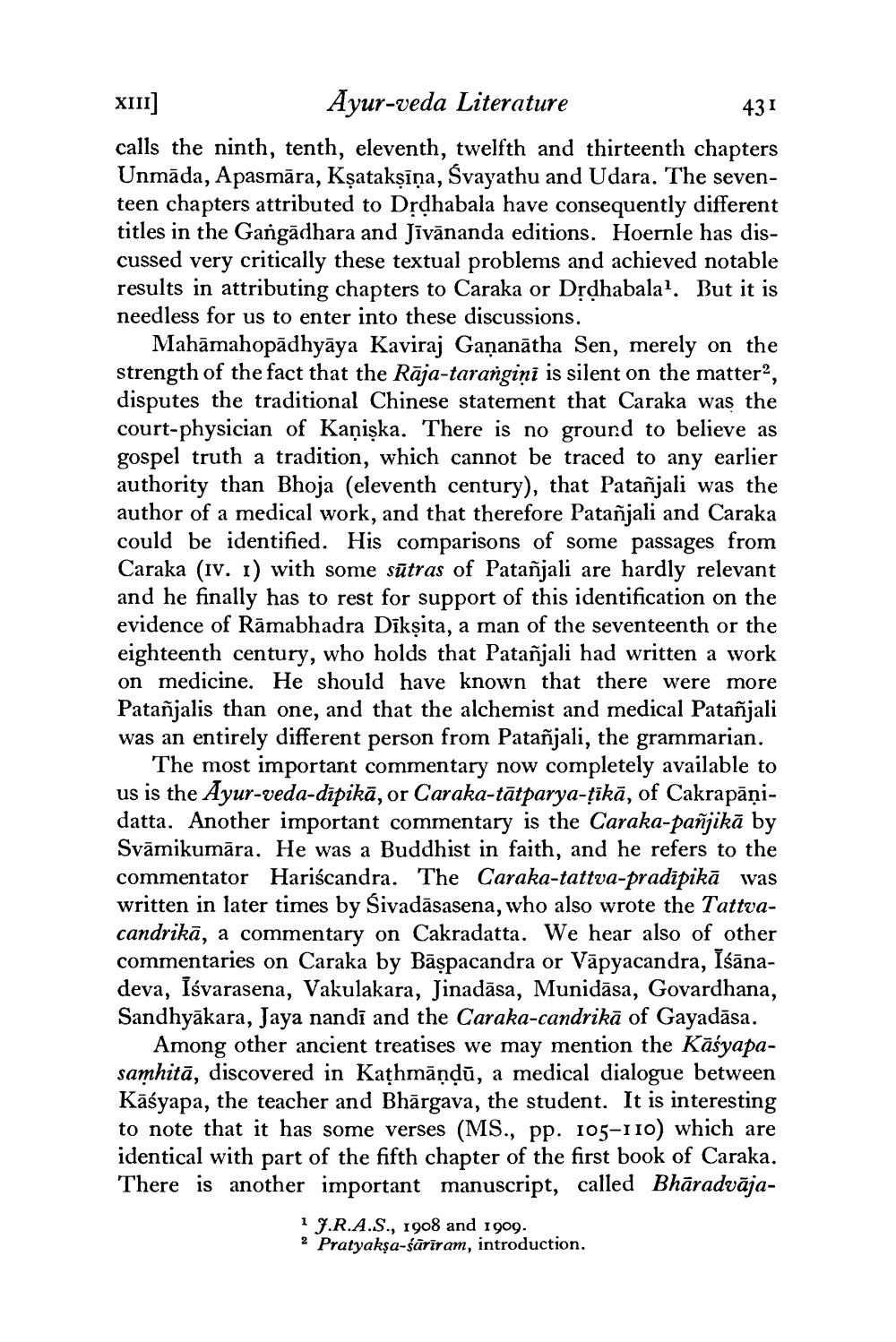________________
XIII] Ayur-veda Literature
431 calls the ninth, tenth, eleventh, twelfth and thirteenth chapters Unmāda, Apasmāra, Kșatakṣīņa, Švayathu and Udara. The seventeen chapters attributed to Drdhabala have consequently different titles in the Gangādhara and Jīvānanda editions. Hoernle has discussed very critically these textual problems and achieved notable results in attributing chapters to Caraka or Drdhabala?. But it is needless for us to enter into these discussions.
Mahāmahopādhyāya Kaviraj Gañanātha Sen, merely on the strength of the fact that the Rāja-tarangini is silent on the matter?, disputes the traditional Chinese statement that Caraka was the court-physician of Kaņişka. There is no ground to believe as gospel truth a tradition, which cannot be traced to any earlier authority than Bhoja (eleventh century), that Patañjali was the author of a medical work, and that therefore Patañjali and Caraka could be identified. His comparisons of some passages from Caraka (Iv. 1) with some sūtras of Patañjali are hardly relevant and he finally has to rest for support of this identification on the evidence of Rāmabhadra Dīkṣita, a man of the seventeenth or the eighteenth century, who holds that Patañjali had written a work on medicine. He should have known that there were more Patañjalis than one, and that the alchemist and medical Patañjali was an entirely different person from Patañjali, the grammarian.
The most important commentary now completely available to us is the Ayur-veda-dīpikā, or Caraka-tātparya-țīkā, of Cakrapāņidatta. Another important commentary is the Caraka-pañjikā by Svāmikumāra. He was a Buddhist in faith, and he refers to the commentator Hariscandra. The Caraka-tattva-pradīpika was written in later times by Sivadāsasena, who also wrote the Tattvacandrikā, a commentary on Cakradatta. We hear also of other commentaries on Caraka by Bāşpacandra or Vāpyacandra, Īśānadeva, Iśvarasena, Vakulakara, Jinadāsa, Munidāsa, Govardhana, Sandhyākara, Jaya nandi and the Caraka-candrikā of Gayadāsa.
Among other ancient treatises we may mention the Kāśyapasamhitā, discovered in Kathmāņdū, a medical dialogue between Kāśyapa, the teacher and Bhārgava, the student. It is interesting to note that it has some verses (MS., pp. 105-110) which are identical with part of the fifth chapter of the first book of Caraka. There is another important manuscript, called Bhāradvāja
1 J.R.A.S., 1908 and 1909. 2 Pratyakşa-śārīram, introduction.




